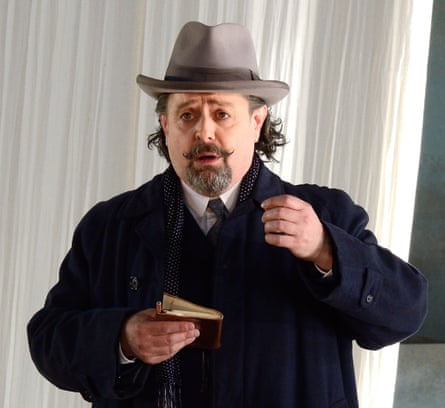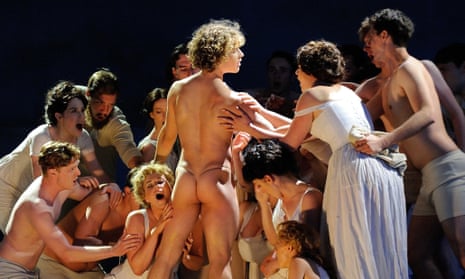Britten’s last opera, Death in Venice, is also his oddest. Its most remarkable achievement is presenting Aschenbach both as hero and silent narrator: we only see the world through his eyes. It’s a risky strategy: Thomas Mann’s tortured genius can be a pompous ass, who grapples with his frustrated sexuality by quoting bleeding great chunks of Plato. Britten also uses highly specialised, expressively restrained musical devices, while the vocal idiom seems to take excessively hammy theatrical diction as its tonal model.

It’s remarkable, then, how powerfully direct an opera it can be, as it proves in this new production by Garsington Opera, conducted by Steuart Bedford and directed by Paul Curran. Bedford, who conducted the world premiere in 1973, keeps the atmospheres trim, getting the best from the house orchestra and excellent scratch chorus. He also allows the main singers – Paul Nilon’s Aschenbach and William Dazeley in the composite Traveller role – freedom to inhabit their characters fully. Nilon, always a fine actor, retains depth of tone throughout, while Dazeley’s expertly calibrated parade of sinister parodies burst through the texture, effortlessly wresting control over the stage.
The production’s greatest success, however, lies in Kevin Knight’s minimal set (four white curtains and a sea/lagoon backdrop; most of the budget has gone on the exquisite belle époque costumes) interacting with Andreas Heise’s choreography to present the opera’s central conflict in terms of movement. The curtains blur and fade, frustrating and enabling physical contact, while the dance celebrates both the pent-up energy of physical perfection as well as the fragile dynamism of bodies off-balance. All the dancers are superb, but the astounding power and confidence of Celestin Boutin’s stage debut as Tadzio effectively steals the show. His duets with Chris Agius Darmanin’s Jaschiu, when they hurl each other across the stage, are breathtaking, as is his ability to let the merest flicker of a smile escape mid-pirouette.
- At Garsington Opera at Wormsley, Buckinghamshire, until 10 July. Box office: 01865 361636

Comments (…)
Sign in or create your Guardian account to join the discussion